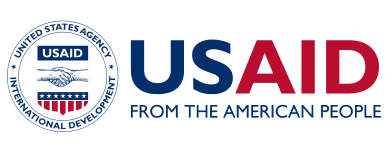Asia EDGE interventions in South Asia covers Bangladesh, Bhutan, India, Nepal, Sri Lanka, and the Maldives. Although these countries have been one of the fastest growing regions in the world, with an average annual GDP growth rate of about 7% in 2018-19, they face basic development challenges. South Asia houses about 40 percent of the global poor; rapid urbanization and rising middle-class incomes, including expansion of the largely agriculture based rural economy have led to explosive growth in energy demand with its electricity sector plagued by shortages and poor service quality. In order to support the historic economic growth, the countries had to increase the dependency on imports of oil/coal/LNG to meet their commercial energy needs. Also, South Asia can no longer ignore the burgeoning environmental challenges, such as the well-publicized public health crisis due to air pollution for which energy processes are a significant contributor; These issues, which are intrinsically connected to energy security and economic growth, can no longer be viewed as side issues and threaten economic growth and public health of the region.

These countries offer tremendous opportunities for an affordable, reliable, diversified and secured energy sector basis the current status and future priorities, mentioned below.
- Expected increase in electricity demand which is expected to double by 2030

- Additional generation capacity requirement of 500 GW by 2030
- Poor access to modern energy (~15% w/o electricity in 2018)
- Low fuel diversity in power sector with several countries dependent primarily or entirely on one fuel (Bangladesh – natural gas is 60%; India – coal is 67.9%; Nepal – hydropower is 99%; Sri Lanka – oil is 50.2%; and Maldives – oil is 100%).
- Least inter-linked region with ~2,500 MW intra-regional trade. Intraregional trade is less than 2% of GDP, and regional energy trade is less than 0.5% of the total external trade.
- Domestic energy market is mostly regulated
- Domestic energy resources are underutilized
- High level of air pollution due to energy process related to extraction and combustion
- Status of electricity reforms particularly that relates to the power distribution sector (reforms status in the table below)
| Country | Unbundling | Regulator | Corporatization | Third party access | Distribution privatization | Independent Power Producers (IPPs) |
|---|---|---|---|---|---|---|
| Bangladesh | X | X | X | X | ||
| Bhutan | X | X | X | |||
| India | X | X | X | X | X | X |
| Maldives | X | X | X | |||
| Nepal | X | X | X | X | ||
| Sri Lanka | X | X |
Investment opportunities in energy sector
ADB estimates USD 6.3 trillion for South Asia (including Pakistan and Afghanistan) between 2016-2030 which is about one-fourth of the estimated USD 26.1 trillion investment opportunity for the entire Asia. International Finance Corporation (IFC) has estimated USD ~3 trillion opportunity on clean energy and climate smart solutions for South Asia which is about one-fifth of the USD 14.7 trillion opportunity estimated for the entire Asia. Green Buildings, Electric Vehicles and Renewable Energy together present ~70% of investment opportunity. IFC estimates 92% of the estimated investment potential in India, due to the scale of its economy and population.

Investment potential by sector in South Asia (2018-2030) in Billion US Dollar (Source: IFC)

The region so far has been primarily dependent on government spending for infrastructure development while the private sector has played a subdued role, often supported by substantial government subsidies and guarantees. Both privatizations and public-private partnerships (PPPs) are below the global average. The scale of the challenge and opportunity means governments need to ignite private sector solutions and investments to help achieve energy security goals, while the public financing should be used as a catalyst to attract private resources rather than replace private financing. The key challenges faced by the private sector in the South Asia region include the following.
- Risks associated with poor governance, weak contract enforcement and vulnerability to instability increase the cost of projects.
- Lack of bankability of projects due to poor documentation or deal structure; inappropriate covenants or funding structure; uncertainty over rights to payments; poor economic or legal recourse options.
- Limited availability of debt for the private sector due to absence of efficient ways to bring new sources of international capital
- Lack of standardized project documentation, tendering, contracting and due diligence processes, restrict faster replication and economies of scale.
- High cost of capital for projects involving modern technologies due to risk perception from policy, technology, operation, capacity, and currency
- Poor creditworthiness of off takers especially the sub-national governments

